Lumbar Spinal Stenosis
Introduction
Conditions in the spine may cause a compression in the spinal cord. This can cause a wide variety of symptoms depending on the spinal nerve that is being affected [1].
What is Lumbar Spinal Stenosis?
Spinal stenosis is a medical condition in which there is narrowing of the spinal canal. Since this is where the spinal cord is located, the cause of the narrowing may press on the spinal nerves.

The patient will experience signs and symptoms depending on the nerve that is affected. In lumbar spinal stenosis, the nerves in the lumbar area are the ones being pressed on [1, 2].
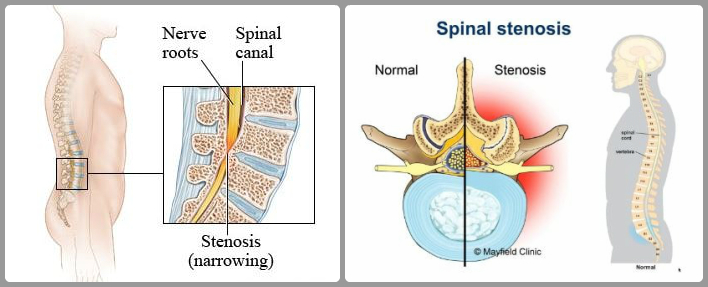
The lumbar area is the segment of the spine that is located around 5-6 inches below the shoulder blade. It is composed of 5 vertebral segments and the last 2 of these segments carry the most weight which makes them prone to degeneration and injury. It comes after the thoracic vertebra and before the sacral spine.
The nerves that exits through the openings in the lumbar area connects together and forms the sciatic nerve. This nerve travels down into the legs and down to the feet. Due to this, most of the signs and symptoms of lumbar spinal stenosis are felt at the lower extremities. Figure 1 shows an illustration of the lumbar stenosis [2, 3].
The 2016 ICD-10-CM diagnosis code utilized in lumbar spinal stenosis is M48.06. This code is for the spinal stenosis of the lumbar area or region [4].
Causes of Lumbar Spinal Stenosis
Bone Degeneration
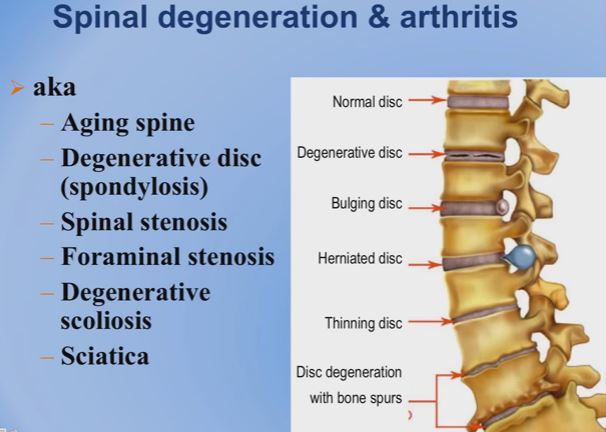
The degeneration of bone that is associated in aging is the primary cause of lumbar spinal stenosis. Bones lose water content which makes it brittle and weak. The resulting weakness may cause settling or collapse of the vertebrae and narrow the spinal canal and press on the spinal nerves [5, 6].
Osteophytes Formation
Cartilages that acts as a covering of the bones wear away with age. When these protective part wears off completely, it can cause bone to bone rubbing. In order to prevent this from happening, the body will replace the cartilage with bone spurs. These bone overgrowths, or osteophytes, may narrow the spinal canal or the nerve and press on the spinal nerves [5, 6].
Other Causes
There are other less common cause of lumbar spinal stenosis. Metabolic bone disorders such as Paget’s bone disorder may also cause spinal bone growth and compress the spinal nerves. Tumor growth in the spine may narrow the available space for the spinal cord. Trauma and fractures in the spine may damage the spine and press on the spinal nerve [5, 6, 7].
Signs and Symptoms of Lumbar Spinal Stenosis
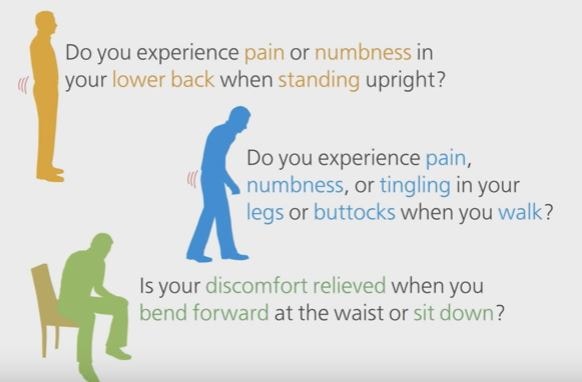
The sign and symptoms of lumbar spinal stenosis only appear if the spinal nerves are being pressed on. The symptoms that are felt develop gradually and may worsen through time. Some of the symptoms may include [1, 6, 7]:
- Pain in the buttocks or legs
- Weakness in the legs
- Numbness in the buttocks or legs
- Low back pain
- Loss of control of bowel and bladder
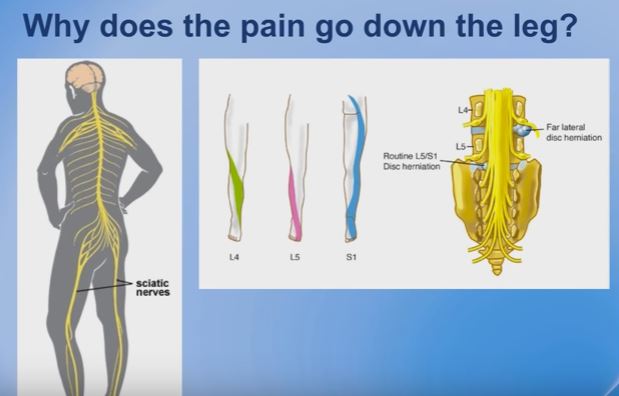
Diagnosis of Lumbar Spinal Stenosis
Health History and Physical Examination
Patients with lumbar spinal stenosis usually consult a physician due to leg pain. Health history will focus on obtaining more information about the pain including activities that worsen or relieves the pain. Physical examination will include performance of range of motion exercises to see if they will cause pain or discomfort [5, 6].
Imaging Tests
A physician may request imaging tests to confirm the diagnosis of lumbar spinal stenosis. X-rays will provide a visualization of the bones in the spinal column. It will be able to show the degree of bone degeneration and osteophyte formation in the spine [1, 5, 6].
A Computed Tomography scan (CT scan) or a Magnetic Resonance Imaging (MRI) will allow analysis of the soft tissues around the lumbar area. It will show the area where the lumbar spinal nerve is being compressed [1, 5, 6].
Treatment of Lumbar Spinal Stenosis
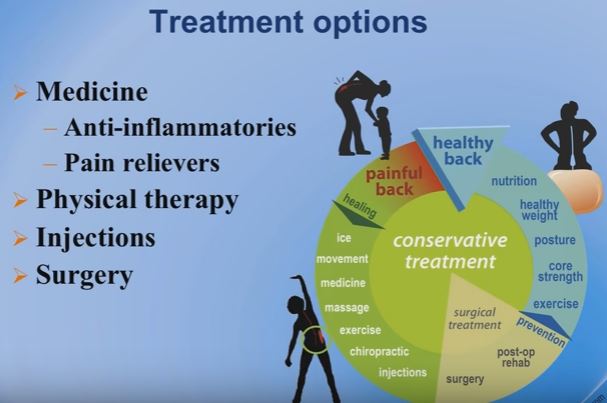
Nonsurgical Treatment
These treatment modalities do not resolve the narrowing that occurs in the spinal canal but it will be able to reduce the pain and restore the function. Anti-inflammatory medications are prescribed to reduce the swelling around the nerve and provide pain relief. Steroid injections may be advised for extreme pain. It will be injected in the epidural space to decrease the pain and pressure in the spinal cord.
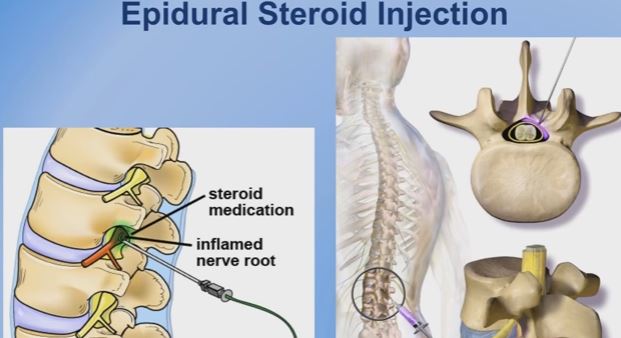
Chiropractic manipulation of the spine is considered to be safe and can provide some relief from the pain due to lumbar stenosis. It must be noted that this method is not advisable to those with disk herniation or osteoporosis as it may worsen the condition [5, 6].
Surgery
If the pain becomes unbearable for a patient, he may be advised to undergo a surgical procedure. A laminectomy may be done to remove the bone, osteophytes and ligaments that may be pressing on the nerves. This procedure can also be called “decompression” because it removes the source of the pressure to the spinal nerve [5, 6].
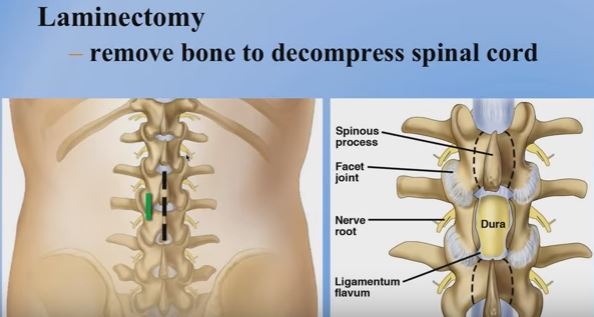
Laminectomy Surgery for Lumbar Spinal Stenosis

Interspinous spacer for lumbar stenosis

Spine Fusion Surgery for Lumbar Spinal Stenosis
Exercises
After undergoing laminectomy, the patient needs to undergo rehabilitation. It may be advised to wear a corset for comfort but they are encouraged to resume walking as soon as possible. Engaging in these activities will improve the blood flow and bring the nutrients to the back area.
Exercises will be performed to maintain the strength of the abdominal muscles and improve spinal instability. Strengthening the back muscles is essential because it will be able to remove some pressure from the static structures of the back [1, 5, 6].
References
- Ullrich, P. J. (2015). Lumbar Spinal Stenosis: A Definitive Guide. Retrieved from Spine-health: http://www.spine-health.com/conditions/spinal-stenosis/lumbar-spinal-stenosis-a-definitive-guide
- Davis, E. (2011, February 10). Lumbar Spine Anatomy and Pain. Retrieved from Spine-health: http://www.spine-health.com/conditions/spine-anatomy/lumbar-spine-anatomy-and-pain
- Bluth, T. (2015, June 8). Lumbar Stenosis. Retrieved from Fit Stop Physical Therapy: http://fitstopphysicaltherapy.com/2015/06/what-is-spinal-stenosis-and-how-can-pt-help/
- (2015). Spinal stenosis, lumbar region. Retrieved from ICD10Data: http://www.icd10data.com/ICD10CM/Codes/M00-M99/M45-M49/M48-/M48.06
- Shiel, W. J. (2015, November 18). Lumbar Spinal Stenosis. Retrieved from Medicinenet: http://www.medicinenet.com/lumbar_stenosis/page2.htm
- (2013). Lumbar Spinal Stenosis. Retrieved from Orthoinfo: http://orthoinfo.aaos.org/topic.cfm?topic=a00329
- (2014, June 4). Lumbar Spinal Stenosis. Retrieved from WebMD: http://www.webmd.com/back-pain/tc/lumbar-spinal-stenosis-cause
